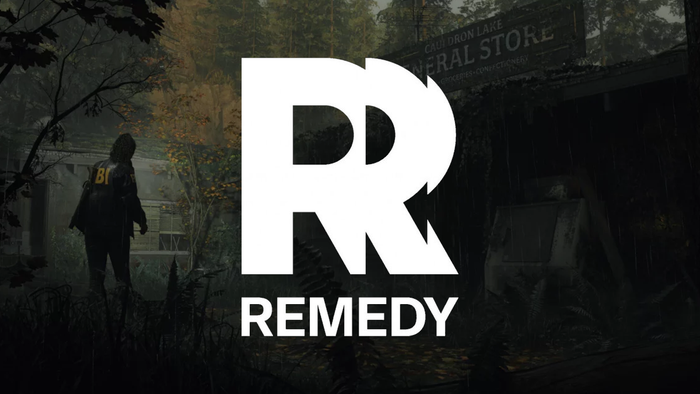
Featured Blog | This community-written post highlights the best of what the game industry has to offer. Read more like it on the Game Developer Blogs.
4 tips for building and supporting your mobile game community
The ability to construct a meaningful and productive community around your game is the key to free-to-play success. Keep reading for tips on how to build and maintain a great relationship with your players.

Community. It’s not just a popular TV sitcom, but also an essential part of any successful mobile free-to-play game. Most game marketers accept the importance of social virality and that the majority of players are looking to share, compete and expand their experience by playing with others. Being able to construct and maintain a community around your game can be the key to harnessing these qualities and unlocking free-to-play (F2P) success.
Before attempting to set up a community around your title, it’s worth understanding why it’s even important to build a community in the first place and how to foster a friendly environment around your game. On the one hand, it’s an opportunity to build and promote your brand among valuable players. By offering players a chance to interact and share their experiences, you can use your community as a springboard for future success. A study in 2013 by Applifier showed that 20% of users are sharers and these people drive installs, play longer and are worth more - a cohort clearly worth courting.
On the other hand, it’s a mechanism for allowing free and forthright debate between players and your company. Rather than pointing players to a bland form on a web page or seeing your app reviews take a battering from frustrated players who feel disconnected - a fully functioning community allows players to reach you, resolve problems and feel like they can influence the development of a game they like.
It’ll also help to deepen the relationship between your players and the game world you’ve constructed. Huge sites dedicated to the lore behind Skyrim and Mass Effect don’t pop up because fans have nothing better to do; they do it because they’re attached to the game world the developers have created. Community is an important part in cementing that relationship. For this reason, we have outlined our top four tips for building and supporting a mobile gaming community.
1) Use free services to build your offering
When it comes to building a community from scratch, there is a danger that you can suddenly open yourself up to a lot of work and costs. As potentially thousands or millions of players flood to your title, it can quickly become expensive to manage regular feedback - particularly if there is a problem in the game.
Therefore, it makes sense to give your team the tools that can manage volume and fit in with player community expectations. Social networks like Facebook and Twitter are the obvious winners here, as the free service components of Hootsuite and Tweetdeck allow you to process lots of interactions in a manageable format. You can then use services like Topsy further down the line to find influencers and refine management strategy to reach top players.
Beyond that, there are other smart low-cost options. Forums and wikis regularly prove useful because users both create the content and are often happy to take responsibility for moderation. We’re all aware of how simple it is to use Gmail to filter and organize customer support emails, meaning you can construct that initial layer of infrastructure to build your community.
2) Build a schedule around key dates
Another element of organizing a successful community effort is making sure that you keep a regular schedule of posting. By taking the time and effort to build a schedule, you can make sure you have a regular flow of planned content into the community and frees up time to respond to off-the-cuff issues that inevitably arise.
There are three main components to a successful schedule. The first component is regularly scheduled posts that go up every week without fail and often result from spotlighting activity from your gamers. This could range from the most epic bases seen in your game for that week, to the results of who won in game tournaments or a round-up of the most impressive fan art. By showing gamers you’re watching and appreciating their experiences, the bond between company and player grows.
The second type of post includes important news and updates about your game for fans to get excited about. These posts are rarer or more frequent depending on the game and developer, but you can hype up new content launches by teasing news in the weeks leading up to the reveal and talk about the feedback or effects after the release.
Finally, there are seasonal dates for you to keep an eye on. Christmas, Easter, Valentine’s Day, Halloween and Thanksgiving are obvious ones, but there are all sorts of special days that can tie into your marketing. We recently posted a special graphic for Mother’s Day on a more traditional angle and we’d consider a post for International Talk Like A Pirate Day on 19th September for our title Pirates: Tide of Fortune.
By building up this calendar of content and keeping to it, you can make sure that there is always something for your community to get into and to promote your titles effectively.
3) Apply the personal touch to communication
However important infrastructure and scheduling is, making sure that you have someone with a personal touch managing your community is essential to success.
On a basic level, the importance of this is to make sure someone has ownership of expanding the community. It’s great to have someone occasionally fielding replies to problems that land in your inbox, but that is the bare minimum. You’ll find community management and growth are vastly improved when your team is personally dedicated to responding and monitoring all channels. A personalized note promising a player that we will fix a bug will go a lot farther than a generic response that says “we are looking into the problem”.
By using humor effectively, listening and respecting the concerns of players and speaking the language of your fanbase, you’ll find your community efforts have far more success. It may surprise you to think of how much of an impact one post can have, but a single tweet can have a real effect down the line. Since mobile devices have become personal tools, individual interactions can make the difference between a player liking your game and becoming an ongoing advocate for it and other future titles.
4) Measure where possible – but accept there are limitations
The natural inclination of any good mobile marketer is to measure and track key performance indicators to try and see how performance can be improved.
There are numerous ways that you can do this for your mobile game – including Facebook and Twitter, which offer analytics tools to show you how effectively your posts work. Online reputation management tools like Rankur can give you an indicator of positivity (or otherwise) about your overall efforts. Keyword mining in app store reviews and review scores help you identify how your community efforts can improve games. Metrics such as engagement and retention can be linked back to community efforts as well, particularly if you time community posts with live events or the release of new content.
A company needs to accept there will always be a slight intangibility at the heart of community management - and that’s fine; community construction often relies on personal interactions that are based on emotions, often too difficult to quantify in the space of a Twitter exchange.
However, as long as you accept this and do your best to measure how your community efforts are working elsewhere, then you should be able to strike a good balance between making a measurable impact on in game performance and keeping a wide swath of players happy. In order to excel in F2P, a developer has a responsibility to make sure their titles are maintained over the long term and building a symbiotic community is one of the main ways to do so.
Read more about:
Featured BlogsAbout the Author(s)
You May Also Like













